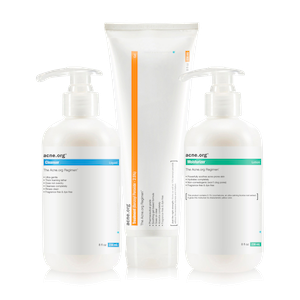http://www.ncbi.nlm.nih.gov/pubmed/24131091
Seems like spot treating ice picks with a CO2 laser is more effective than Cross. Any ideas on how to get this done?
Another one: this is a full journal http://www.co2fracionado.com.br/artigos/J-Cosmet-Laser.pdf
The pinpoint irradiation uses full c02, not fractional c02, so that "FAST" thing isn't the same. This is a potentially revolutionary technique for ice pick/boxcar scars.
I would go for full ablation. fractionated is not as aggressive. but beware of skin memory. the skin remembers the contour of the scar and will gradually start to show the scar slightly have a ablation. That is why several sessions could be needed. Even with dermabrasions, usually it requires 2 sessions.
The pinpoint irradiation uses full c02, not fractional c02, so that "FAST" thing isn't the same. This is a potentially revolutionary technique for ice pick/boxcar scars.
I read the study, and looked at the laser manufacturer's site. Where does it say full, traditional Co2 or 100% ablation? Reading the end of the study where they talk about the pin size pattern during healing and where they compare the beam size & pattern to other lasers like Active FX, I'm led to believe there's been a translation error and they didn't use 100% ablation. Also, the laser is a Korean fractional Co2 laser. It sounds like they didn't use a particular fractional device or hand piece for that laser. Am I missing something?
EDIT:
I get it now. They used a fractional laser but didn't use the fractional handpiece or scan area where the laser is delivered in a fractional pattern. They used a single 0.3mm laser beam and delivered it with a single long pulse. They then moved the laser about 0.3mm and ablated another pinpoint spot, etc. creating their own pinpoint pattern over the scar. They didn't overlap or fully ablate the scar. The laser was used to deliver thermal damage to the base of the scar for collagen remodeling. They then needled the scar to a depth of 1mm. I think the needling is a good idea, especially since they could not ablate to that depth with the laser.
Looks like a technique some doctors are using in South Korea. I'd be surprised if any doctors in America would use this technique.
My doc started using it after I showed him the journals in January. I'm waiting a few more months till he gets results from other patients though to make the dive. He's a plastic surgeon and also a good friend of mine.
Looks like a technique some doctors are using in South Korea. I'd be surprised if any doctors in America would use this technique.
My doc started using it after I showed him the journals in January. I'm waiting a few more months till he gets results from other patients though to make the dive. He's a plastic surgeon and also a good friend of mine.
I was going to say, you'd have a chance if you found an open-minded doctor who is willing to read the study and try it because he really wants to help his patients.
I did something similar with my doctor. I had him watch a webinar about a particular layering technique with double passes of two different laser modes on each individual scar. The technique is definitely more time consuming than simply passing a laser 1-2 times over someone's face. My doctor actually thanked me for sharing the technique & webinar with him, and didn't have a problem trying it on me. He did do it too, and I'm grateful for that. I don't think a lot of doctors are willing to think outside of the box or willing to try new techniques that are suggested by a patient & not widely practiced/proven in their field.
 Acne.org Products
Acne.org Products